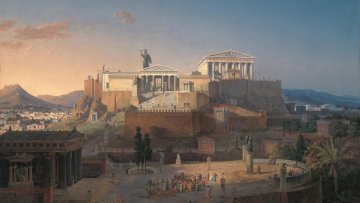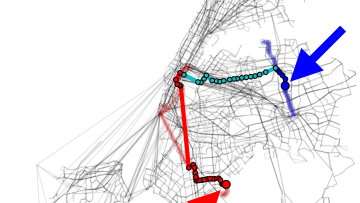Outer Automorphisms of Hyperbolic Groups
Abstract
I will talk about a remarkable theorem by Paulin, which says
that if a one-ended hyperbolic group has infinite outer automorphism
group, then it splits over a two-ended subgroup. In particular, this
gives a condition which ensures a hyperbolic group doesn't have property
(T).
Galois Characterization of Henselian Fields
Abstract
I will talk about Jochen’s theorem about the existence of some non-trivial Henselian valuation given by investigating the absolute Galois group.
16:30
Torelli and Borel-Tits theorems via trichotomy
Abstract
Using the "trichotomy principle" by Boris Zilber I will give model theoretic proofs of appropriate versions of Torelli theorem and Borel-Tits theorem. The first one has interesting applications to anabelian geometry, I won't assume any prior knowledge in model theory.
Many of us know the feeling of standing in front of a subway map in a strange city, baffled by the multi-coloured web staring back at us and seemingly unable to plot a route from point A to point B. Now, a team of physicists and mathematicians has attempted to quantify this confusion and find out whether there is a point at which navigating a route through a complex urban transport system exceeds our cognitive limits.
Extended QFT in Euclidean and Minkowskian signatures
Abstract
I'll explain the formalism of extended QFT, while
focusing on the cases of two dimensional conformal field theories,
and three dimensional topological field theories.
15:00
Computing Factor Tables, and Tables of Class Numbers
Abstract
Efficient factorization or efficient computation of class
numbers would both suffice to break RSA. However the talk lies more in
computational number theory rather than in cryptography proper. We will
address two questions: (1) How quickly can one construct a factor table
for the numbers up to x?, and (2) How quickly can one do the same for the
class numbers (of imaginary quadratic fields)? Somewhat surprisingly, the
approach we describe for the second problem is motivated by the classical
Hardy-Littlewood method.
Boundary Conditions, Mirror Symmetry and Symplectic Duality
Abstract
In the last few years, it has become clear that there are striking connections between supersymmetry and geometric representation theory. In this talk, I will discuss boundary conditions in three dimensional gauge theories with N = 4 supersymmetry. I will then outline a physical understanding of a remarkable conjecture in representation theory known as `symplectic duality.



